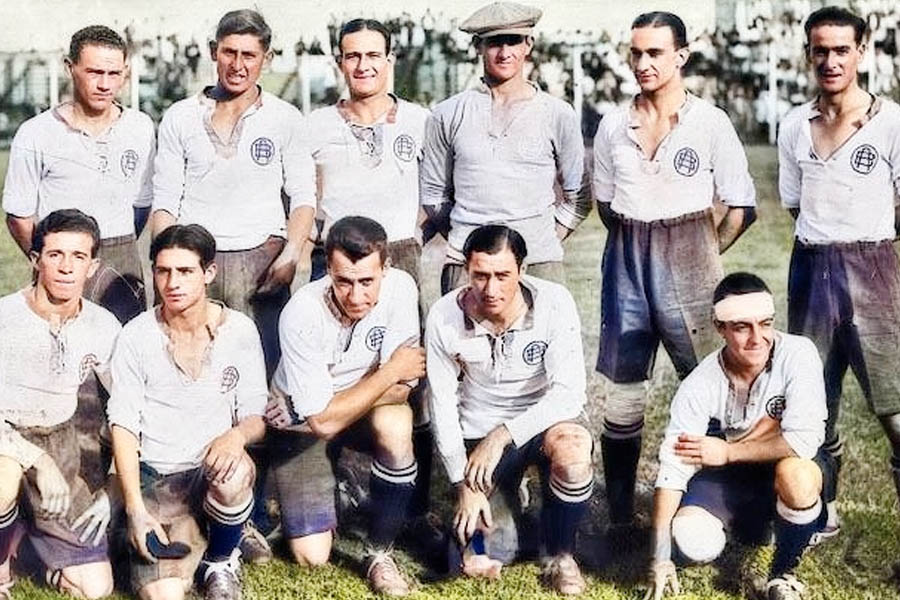In Argentina , soccer is much more than a sport, it is practically a religion, an unbridled passion that transcends everything imaginable. The best-known Argentine teams, such as Boca Juniors and River Plate , are considered among the best teams in all of America, and on many occasions they have reached the finals of intercontinental tournaments to regularly play them against European teams. . The players of this nation have also managed to stand out greatly, especially in recent decades, with players of the stature of Diego Armando Maradona, Jorge Valdano and Leo Messi, considered among the best in history. It is the glamorous part that everyone sees and knows about Argentine soccer. But there is another vision, much less idyllic but also real, which includes teams not so successful, but equally essential to know the reality of Argentine football.
Beyond the important and “rich” clubs, those that have stood out practically throughout their career, there are a consignment of somewhat less important clubs , but also decisive when it comes to understanding football in that country . One of the classics that has always remained in everyone’s memory is the Club Atlético All Boys , a Buenos Aires neighborhood team that managed, at the time, to stay in several streaks in the national top flight , but then he has been wandering through the lower divisions, waiting for a new opportunity to play again at Olympus. All Boys is one of the most authentic and special clubs that we find in Argentina , and in this article we wanted to know a little more about its history, its idiosyncrasy, its players and everything that has to do with the black and white club.
How this team was born

The club arises in Floresta, a neighborhood of Buenos Aires , where in 1913 a group of friends decided to found a sports club to enjoy the sport that was causing a sensation at the time, soccer or football. That first team was called All Boys Athletic Club to continue the tradition of naming teams with Anglo-Saxon names. In reality, the team pretended to be called Todos Muchachos , because of the youth of its members. The literal translation would be precisely that of All Boys. In those early years, always within its amateur condition, the team trained within the neighborhood and began to play unofficial matches against other rivals , usually within Buenos Aires itself, with primal “classics” against Argentinos Juniors, his first great rival.
Early years
From its birth in 1913 to the beginning of official competitions in 1924, the history of the All Boys is summed up in creating the necessary infrastructure to move the club forward. In 1924 he played his first tournament together with other amateur teams, remaining in last position. For decades, the tournaments that are played are simply at amateur level, until football becomes professional in the country, leaving the All Boys relegated to the national Second Division for several decades. It was a modest club, with players from the neighborhood , and although it completely maintained its essence, the results were not very good. Everything changed in the 1970s, when a series of great consecutive victories allowed the team to rise to the top division of national football for the first time in its history.
Promotion to first division
After finishing in first position within the Second Division , the All Boys rose to First Division in 1972 and remained in that category for eight seasons , the best streak of the team in the highest division of Argentine football. That climb was a milestone in Floresta, the neighborhood that has always identified with the boys. After descending again in 1980 , the team once again wandered through the lower divisions, and was on the verge of disappearing at the end of the 20th century, due to the large debts it accumulated. After returning to the hell of the Third, the club rose thanks to the good financial management of the new leaders and returned to the top flight in 2010 , staying there for four years , surely the best and most glorious for the club in recent times.
The best players in their history

The Club Atlético All Boys , a name that it currently holds, has seen the birth and will grow great stars of Argentine football. For example, striker Carlos Tevez emerged from the youth squad of this club, although while still a youth he was transferred to Boca Juniors, the club where he currently remains. Among the great players who did wear the All Boys black and white shirt in their top category, Juan Espina Sivori stands out, who with 127 goals is the club’s highest historical scorer, or Nestor Fabbri, a great talent also emerged from the quarry. Other players such as A riel Zárate, Fernando Sánchez or Nicolas Cambiasso have also been prominent in the ranks of the Buenos Aires team, especially in this last four-year stage in the Primera.
Club Atlético All Boys today
After four seasons in the top flight, All Boys were relegated again to the First B in 2014, even falling to the lower division shortly thereafter. Currently, the team has finished in the 14th position in Zone B within the Primera B , the second division of Argentine soccer. The All Boys are not going through their best times, despite having experienced players like Stefannato . The majority of the squad, of course, is made up of young talents who have come from the lower categories or from other Argentine teams. The little progression that the players have in the All Boys means that many of them, when they stand out, go to other teams in the country or even fly to Europe, which means a constant drain of talent for the club . However, the black and white are not giving up and are already looking forward to a new opportunity to reach the top category .